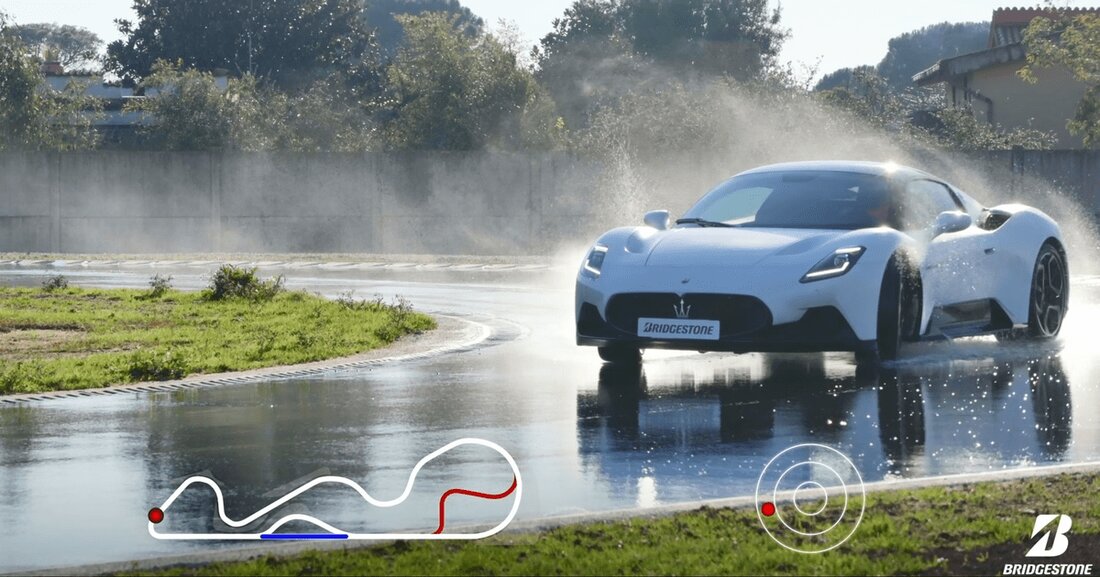Drifting sideways in the wet for more safety
Tire manufacturer Bridgestone inaugurates its new, state-of-the-art wet handling course at the European proving ground.

Drifting sideways in the wet for more safety
Asphalted routes always cost some money. Bridgestone has invested around three million euros for its new wet handling course at the European test site near Rome (Italy). The new course was designed in advance in a virtual environment and offers various opportunities to test the development tires under different weather conditions in order to bring optimal wet driving performance into series production.
The asphalt surface of the test track was designed in collaboration with the University of Pisa. The covering contains carefully selected and particularly wear-resistant components. This offers advantages particularly in terms of long-term durability and also helps to achieve constant friction and a very even grip level. These characteristics help engineers and technicians evaluate the overall performance of the tires. The route layout was also carefully developed in advance with experts.
According to Bridgestone, the sophisticated route offers the following advantages:
- Dynamische, instationäre Bedingungen mit fließenden Übergängen, welche die ideale Analyse und Beurteilung beispielsweise von Über- oder Untersteuern unterstützen
- Die Möglichkeit, Spurwechseltests in der schnellen Schikane durchzuführen sowie in beide Richtungen zu fahren
- Deutlich mehr kombinierte Streckenvariationen und entsprechende Datenerfassung als im ursprünglichen Layout möglich
- Signifikante Steigerung der Längsbeschleunigung im Vergleich zum ursprünglichen Layout (Beschleunigung und Bremsen)
The virtual development used in route simulation to test and fine-tune the design before construction began allowed various scenarios to be assessed in advance and the best possible configuration subsequently selected. Virtual development also offered significant sustainability benefits as the process allows for more efficient use of resources. Additionally, a new water system with six kilometers of piping can return the water to a 4 million liter tank, helping to recycle up to 90 percent of the water and further reduce the environmental impact of the new facility.

 Suche
Suche
 Mein Konto
Mein Konto